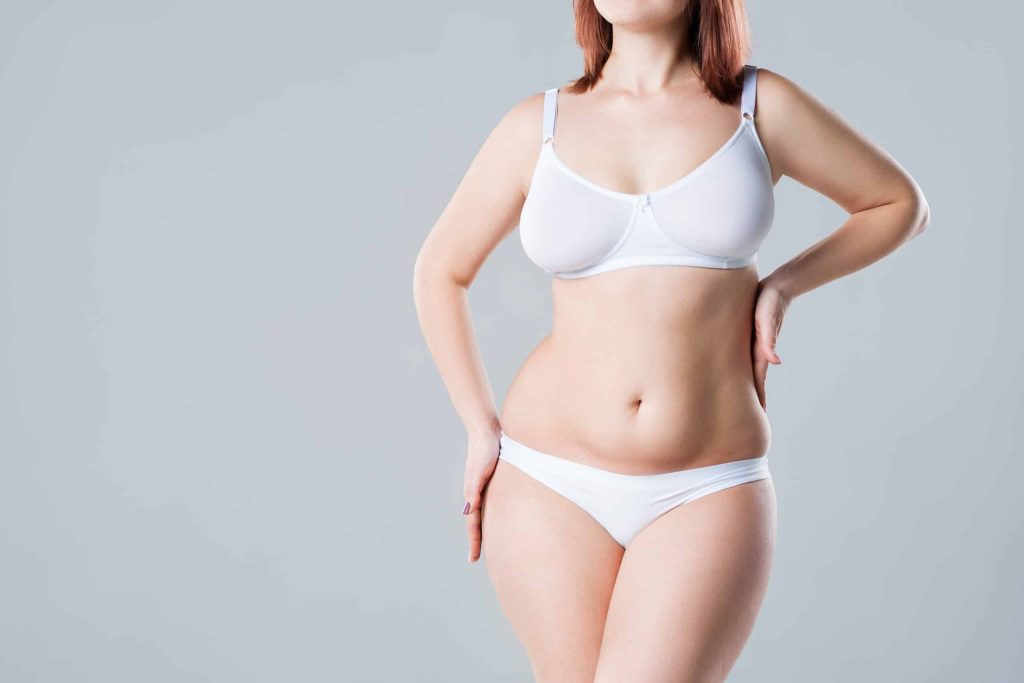Ultrasonic cavitation, also known as ultracavitation, for fat is a game changer in the world of body contouring with liporeductive ultrasound treatments using an ultrasound device and low frequency ultrasound. This non-invasive treatment uses power ultrasonic cavitation treatments with sound waves to break down stubborn fat cells, making it easier to slim down without surgery through ultra cavitation and transcutaneous ultrasound cavitation during ultrasonic cavitation sessions. Many people struggle with diet and exercise, but this innovative fat reduction treatment offers a fresh solution with fat reduction devices and fat removal techniques among fat reduction procedures.
Imagine targeting those tricky areas like the belly or thighs with a fat removal technique such as ultrasonic fat cavitation or ultracavitation, without any downtime. Results from ultracavitation can be seen quickly, and it’s perfect for anyone wanting to boost their confidence with this fat removal technique. With safety and effectiveness at its core, ultracavitation, or ultrasonic cavitation, is gaining popularity among those seeking a new way to achieve their body goals. Dive into the benefits of ultracavitation and learn how this cutting-edge ultrasonic fat cavitation technology can work for you.
What is Ultrasonic Cavitation?
Definition
Ultrasonic cavitation is a non-surgical fat reduction technique. It uses ultrasound technology to target fat cells beneath the skin. This method allows for fat breakdown without any invasive procedures.
Fat cells are disrupted by the ultrasonic waves. These waves create bubbles in the fat tissue. As the bubbles collapse, they release energy that destroys the fat cells. This process is known as ultrasonic lipolysis.
Functionality
Ultrasound cavitation treatments work on specific areas of the body. The procedure focuses on localized fat deposits and cellulite. Common treatment areas include the abdomen, thighs, and arms.
During an ultrasonic cavitation session, a technician applies a gel to the skin. They then use an ultrasonic device to deliver sound waves into the targeted area. The ultrasonic fat cavitation treatment typically lasts around 30 to 60 minutes per session.
Patients usually require multiple sessions for optimal results. Many people notice improvements after just a few treatments. However, achieving significant changes with ultrasonic fat cavitation may take several weeks or months.
Benefits
Ultrasonic cavitation offers various benefits compared to traditional methods like liposuction.
-
It is non-invasive.
-
There is no need for anesthesia.
-
Recovery time is minimal.
-
Patients can return to normal activities immediately.
The procedure also helps improve skin texture and elasticity. Some people feel more confident after seeing their results.
Considerations
While ultrasonic cavitation is generally safe, it may not be suitable for everyone. Individuals with certain health conditions should consult a healthcare provider before starting ultrasonic fat cavitation treatment.
Common side effects of ultrasonic fat cavitation include mild bruising or redness at the treatment site. Serious complications from ultrasonic fat cavitation are rare but can occur if the procedure is not performed correctly.
How Ultrasonic Cavitation Works
Process Overview
Ultrasound cavitation works by applying focused ultrasound energy to fat cells. This energy creates ultrasonic vibrations that target specific areas of fat. The vibrations cause the fat cells to break down into liquid form. This process is non-invasive and typically takes about 30 to 60 minutes per session.
During treatment, a handheld device emits sound waves. These waves penetrate the skin and reach the underlying fat layers. As the waves travel through the tissue, they create micro-bubbles in the fat cells. Eventually, these bubbles expand and collapse rapidly. This action disrupts the structural integrity of the fat cells, leading to their breakdown.
Fat Breakdown
Once the fat cells are broken down, they transform into a liquid state. This liquid consists mainly of glycerol and free fatty acids. The body then processes these substances. The liver plays a crucial role in this phase. It filters and metabolizes the released components.
Glycerol is a substance that can be reused by the body for energy. It enters various metabolic pathways and can support energy production. Free fatty acids, on the other hand, are also utilized for energy or stored for later use.
Elimination Process
After the liver processes these components, the body needs to eliminate them. The breakdown products are expelled primarily through urine. This natural elimination process ensures that the body clears out the liquefied fat effectively.
Hydration plays an important role here. Drinking water before and after sessions helps flush out these broken-down fat cells more efficiently. Staying hydrated supports kidney function and aids in detoxification.
Safety and Efficacy
Ultrasonic cavitation is considered safe for most individuals. It does not require anesthesia or downtime after treatment. Patients can resume their daily activities immediately after each session.
Numerous studies support its effectiveness for body contouring. A 2015 study published in “Lasers in Surgery and Medicine” showed significant reductions in waist circumference after several sessions of ultrasonic cavitation.
Health Impacts of Ultrasonic Cavitation
Effectiveness
Ultrasonic cavitation is effective in reducing cellulite and adipose fat. Studies show that the procedure can lead to a noticeable improvement in body shape. The ultrasound effects target fat cells, causing them to break down. This process can result in smoother skin and less visible cellulite. Many patients report feeling more confident after treatment.
Results vary among individuals. Factors such as body type and lifestyle play a role. Those with a steady BMI often see better outcomes. Regular sessions may enhance results, allowing for more significant fat reduction over time.
Post-Procedure Care
Maintaining a low-calorie balanced diet is crucial after ultrasonic cavitation. Healthy eating supports the body’s natural processes. It helps flush out the broken-down fat cells effectively. A diet rich in fruits, vegetables, and lean proteins promotes overall health.
In addition to diet, regular exercise is essential. Physical activity boosts metabolism, aiding in weight management. Engaging in activities like walking, swimming, or strength training can improve results. Patients should aim for at least 150 minutes of moderate exercise each week.
Eligible Candidates
Certain individuals are more suited for ultrasonic cavitation. Those with a stable BMI typically qualify for the procedure. Women with abdominal adiposity often seek this treatment to address stubborn fat areas.
Candidates should be in good health without significant medical conditions. Pregnant women or those with certain skin conditions may not qualify. Consulting with a healthcare provider ensures safety and suitability for the treatment.
Ultrasonic cavitation is not a weight-loss solution but rather a body contouring method. It works best for those near their ideal weight who want to target specific areas.
Safety of Ultrasonic Cavitation
General Safety
Ultrasonic cavitation is generally considered a safe procedure. Many people undergo it without serious side effects. It uses low-frequency sound waves to target fat cells. These sound waves break down fat, allowing the body to eliminate it naturally.
However, this treatment is not suitable for everyone. Pregnant or breastfeeding women should avoid it. Their bodies undergo significant changes during these times. The safety of the procedure for them remains uncertain.
Contraindications
Certain medical conditions can make ultrasonic cavitation risky. Individuals with health issues like liver disease or kidney problems should consult a doctor first. Those with metal implants should also be cautious. Metal can interfere with the ultrasound waves.
Furthermore, people with cardiac pacemakers must avoid this treatment. The ultrasound may disrupt the device’s function. Always disclose your full medical history before undergoing the procedure.
Skinfold Thickness Requirement
A vital requirement for ultrasonic cavitation is skinfold thickness. Candidates must have a minimum skinfold thickness of 2 cm in the targeted area. This measurement ensures that the ultrasound waves can effectively reach and break down fat cells.
If the skinfold thickness is less than 2 cm, results may be limited. The procedure may not work as intended if there isn’t enough fat to target. Therefore, proper assessment is crucial before proceeding.
Post-Procedure Care
After the procedure, some mild side effects might occur. Common issues include temporary redness or swelling in the treated area. These symptoms usually resolve quickly and do not require special care.
Staying hydrated after treatment is essential. Drinking plenty of water helps flush out the broken-down fat from the body. Following aftercare instructions provided by practitioners ensures optimal results.

Effectiveness of Fat Reduction
Treatment Results
Results from fat reduction treatments can often be seen between 6 to 12 weeks after the procedure. This timeframe allows the body to process and eliminate the disrupted fat cells. Many patients report noticeable changes in their body shape during this period.
The effectiveness varies based on individual factors such as metabolism and lifestyle choices. Some may experience significant fat thickness reduction, while others see more modest results. A balanced diet and regular exercise can enhance these outcomes.
Customized Procedures
Each fat reduction procedure is tailored to meet individual needs. This customization affects both the duration and number of sessions required for optimal results. Factors like body type, targeted areas, and personal goals play a role in this planning.
Typically, each session lasts between 45 to 75 minutes. This timeframe allows for adequate treatment without overwhelming the patient. During this time, practitioners use specialized fat removal devices that target localized fat deposits effectively.
Technology Behind Fat Loss
Ultrasonic cavitation is one of several fat loss technologies available today. It utilizes ultrasound waves to disrupt fat cells beneath the skin’s surface. The disrupted cells turn into fatty acids, which the body then naturally eliminates.
Other fat reduction methods include cryolipolysis, laser lipolysis, and radiofrequency treatments. Each method has its own set of benefits and limitations. Patients should consult with professionals to determine which technique suits them best.
Considerations for Success
Success in fat removal treatments also depends on post-treatment care. Adopting a calorie-controlled diet can help maintain weight loss after sessions. Staying hydrated and avoiding junk food supports the body’s recovery process.
Patients are encouraged to follow a balanced diet to maximize results. This approach helps manage body fat levels effectively over time.
Regular follow-up appointments can also help track progress and make necessary adjustments to treatment plans.
Body Sculpting with Cavitation
Suitable Areas
Ultrasonic cavitation works best on specific body parts. The abdomen, flanks, thighs, hips, and upper arms are ideal for treatment. These areas often hold stubborn fat deposits. People seek this treatment to reduce body weight and contour their figures.
Other areas are not suitable for this procedure. Treatments do not apply to the head, neck, or bony parts of the body. These regions lack sufficient fatty tissue for effective results. Focusing on the right areas ensures better outcomes from each session.
How It Works
The cavitation procedure uses ultrasound waves to target fat cells. This method creates bubbles within adipose tissues. As these bubbles form and collapse, they disrupt fat cells. The pressure from these waves helps break down the fat.
This process does not harm surrounding skin or tissues. Instead, it encourages the body to eliminate the broken-down fat naturally. Many individuals notice a smoother appearance in treated areas after sessions.
Benefits of Cavitation
Ultrasonic cavitation offers several benefits for body sculpting. It serves as a non-invasive option for those wanting to tone their bodies. Patients can achieve results without surgery or downtime.
One significant advantage is that it reduces cellulite appearance. Many people struggle with cellulite in areas like the thighs and hips. Cavitation helps smooth out these uneven surfaces, leading to firmer skin.
Another benefit is that patients can undergo multiple sessions. Each session typically lasts around 30-60 minutes. This flexibility allows individuals to fit treatments into their busy schedules easily.
Effectiveness Over Time
Results may vary based on individual factors. Body weight, metabolism, and lifestyle all play a role in outcomes. Some may see immediate changes after just one session. Others might need a series of treatments for optimal results.
It’s essential to maintain a healthy lifestyle post-treatment. Eating well and exercising can enhance the effects of cavitation procedures. Staying active helps keep weight off and improves overall body tone.
Safety and Approval
Ultrasonic cavitation is an FDA-approved procedure in many regions. This approval indicates its safety when performed by trained professionals. Patients should always verify credentials and experience before choosing a provider.
Consultation before starting treatment is crucial. A professional can assess suitability based on individual health conditions and goals.
Pros and Cons of Non-Invasive Fat Reduction
Advantages
Ultrasonic cavitation offers several benefits. First, it is a non-surgical method. There are no incisions or anesthesia involved. This makes the procedure less intimidating for many people.
Minimal downtime is another significant advantage. Most patients can return to their daily activities right after treatment. This is unlike invasive methods, where recovery time can be lengthy.
Targeted fat reduction is also a key benefit. The procedure focuses on specific areas of the body. This allows for precise sculpting of the body shape. Many individuals find this appealing as they can address problem areas effectively.
Disadvantages
Despite its benefits, ultrasonic cavitation has some drawbacks. One major con is that multiple sessions are often required for noticeable results. Some patients may need six to twelve sessions to achieve their desired outcome.
Certain individuals may not be eligible for this treatment. People with specific health conditions or those who are pregnant should avoid it. Consulting with a medical professional is crucial before starting any procedure.
Another concern is the temporary nature of results. If a healthy lifestyle is not maintained, fat can return. Regular exercise and a balanced diet are essential to keep the results long-lasting.
Summary
In summary, ultrasonic cavitation presents both pros and cons. The non-invasive nature and minimal downtime attract many seeking fat reduction options. However, potential candidates must consider the need for multiple treatments and possible ineligibility.
Patients should also be aware that maintaining results requires commitment to a healthy lifestyle. Understanding these factors can help individuals make informed decisions about body sculpting with cavitation.
Convenience and Cost of Ultrasonic Cavitation
Short Sessions
Ultrasonic cavitation appeals to many due to its short treatment sessions. Each session typically lasts between 30 to 60 minutes. This allows individuals to fit the procedure into their busy schedules. Patients can return to their daily activities immediately after treatment. There is minimal downtime, which contrasts sharply with traditional liposuction methods. Those procedures often require significant recovery time.
Cost Variability
The cost of ultrasonic cavitation varies widely. Factors include the number of sessions needed and the specific treatment areas targeted. On average, a single session can range from $200 to $500. Multiple sessions may be necessary for optimal results, raising the total cost. Some clinics offer package deals that can reduce the overall expense.
Cost-Effectiveness
Ultrasonic cavitation is considered cost-effective compared to other fat reduction methods. Traditional liposuction can cost thousands of dollars and involves surgical risks. In contrast, ultrasound liposuction is non-invasive and generally safer. The lack of anesthesia and incisions also reduces additional costs associated with surgery.
Patients often find they save money over time when choosing ultrasonic treatments. Fewer follow-up appointments are necessary. Many people achieve their desired results in fewer sessions than expected.
Treatment Areas
Common areas for treatment include the abdomen, thighs, and arms. Different areas may have different pricing structures based on the complexity of the procedure. Clinics often provide consultations to help determine costs based on individual needs.
Frequency of Treatments
For best results, patients usually undergo multiple treatments spaced a week or two apart. The frequency depends on body types and desired outcomes. This schedule allows for gradual fat reduction without overwhelming the body.
Patients appreciate that they can see visible results after just a few sessions. Most report noticeable changes in body contour within weeks.
Safety Considerations
Safety is another appealing aspect of ultrasonic cavitation. The procedure uses an ultrasound imaging device to target fat cells specifically. It minimizes damage to surrounding tissues. This precision enhances safety and effectiveness while reducing recovery time.
Últimas Consideraciones
Ultrasonic cavitation offers a modern solution for fat reduction and body sculpting. It’s non-invasive, safe, and effective for many. You’ve learned how it works, its health impacts, and the pros and cons. This knowledge empowers you to make informed choices about your body.
If you’re considering this treatment, weigh the benefits against your goals. Consult with a qualified professional to get personalized advice. Dive deeper into this innovative approach to fat reduction. Your journey toward a more sculpted you can start today—take that first step!
Frequently Asked Questions
What is ultrasonic cavitation?
Ultrasonic cavitation is a non-invasive cosmetic procedure that uses ultrasound waves to break down fat cells in targeted areas of the body. It helps in reducing stubborn fat and contouring the body without surgery.
How long does an ultrasonic cavitation session last?
Typically, an ultrasonic cavitation session lasts between 30 to 60 minutes. The duration may vary based on the treatment area and individual needs.
Is ultrasonic cavitation safe?
Yes, ultrasonic cavitation is considered safe for most individuals. It has minimal side effects, such as temporary redness or swelling, and does not involve any incisions or anesthesia.
How many sessions are needed for effective results?
Most people require 6 to 12 sessions for optimal results, spaced about a week apart. Individual results may vary based on personal goals and body type.
Can I return to normal activities after treatment?
Absolutely! One of the benefits of ultrasonic cavitation is that it requires no downtime. You can resume your daily activities immediately after the session.
Are the results permanent?
Results can be long-lasting if combined with a healthy lifestyle. Maintaining a balanced diet and regular exercise will help sustain the fat reduction achieved through ultrasonic cavitation.
Who should avoid ultrasonic cavitation?
Individuals with certain medical conditions, such as liver disease or pregnancy, should avoid this procedure. Always consult with a qualified professional before undergoing treatment to ensure it’s appropriate for you.





